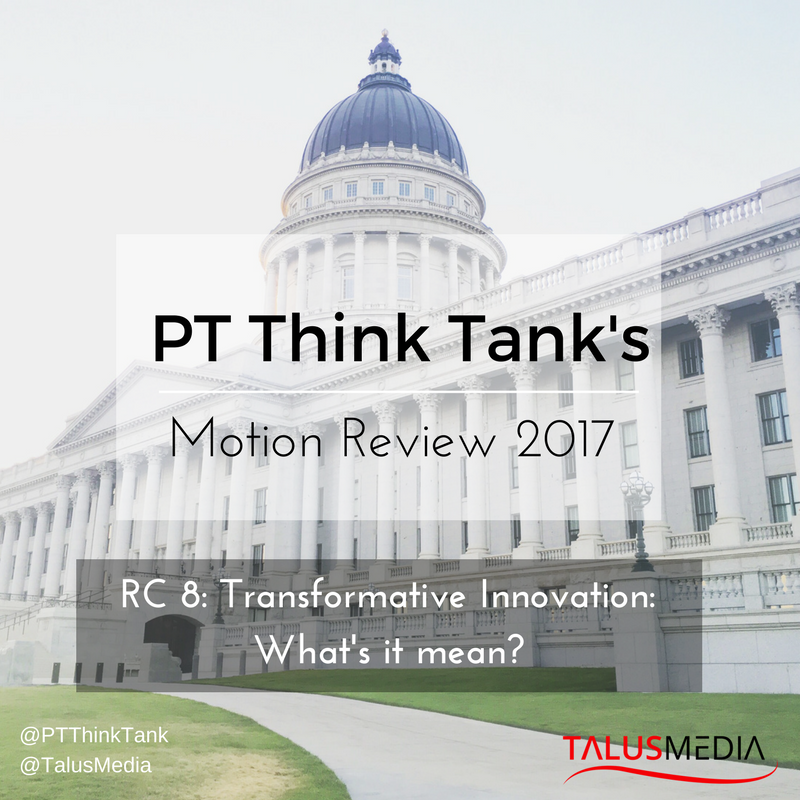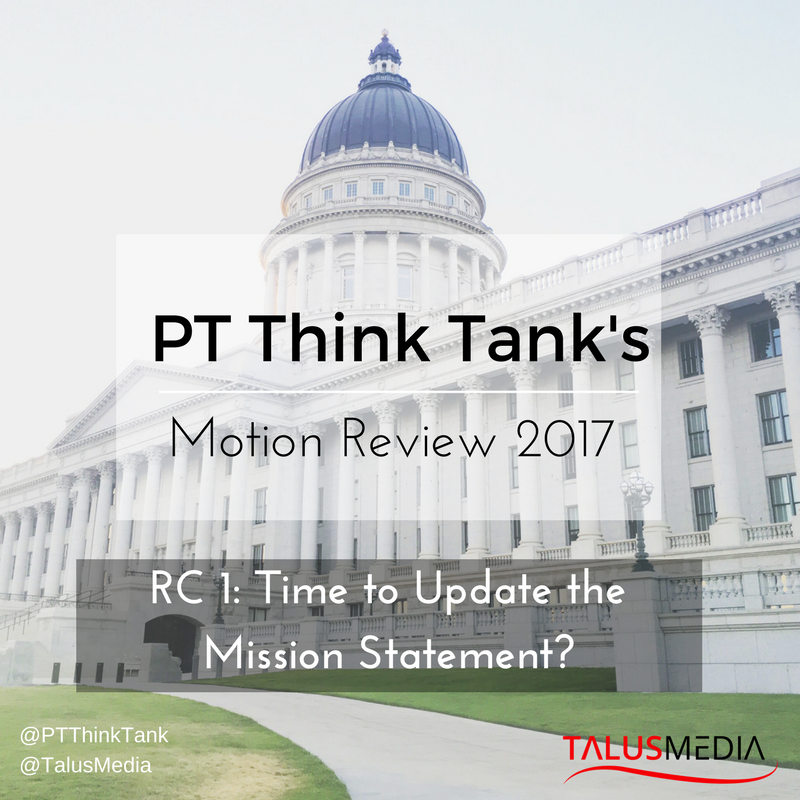
As we continue to explore the motions at the 2017 American Physical Therapy Association’s House of Delegates, RC-8-17 plans to stir some discussion. The motion reads and charges, “[That] the American Physical Therapy Association develop an external entity to expedite the creation and growth of effective transformational innovations that revolutionize physical therapist practice and positively impact society.”
Our vision statement, “Transforming society by optimizing movement to improve the human experience,” makes it clear that we as a profession will be able to improve the human movement of enough individuals to create a societal change. As therapists across the country interact and improve the movement of the members of society the questions remains, are there enough of those interactions taking place that cross the threshold necessary to transform society? Will a bottom-up approach alone create that societal change, or do we also need a top-down approach and guidance for the association to ensure that the bottom-up approach is united and effective in its effort?
The makers of this motion believe that “physical therapists do not appear to have the tools and/or models to transform society given the numbers of individuals required to actually have a transformative effect.” As a result, this motion calls for the creation of a separate external entity much like The Foundation For Physical Therapy. This entity would be modelled similarly after the American Medical Association’s Innovation Ecosystem, which brings diverse experts together to improve physicians’ processes and therefore patient care and outcomes. The external entity of RC 8-17 would be focused on “proving market effectiveness, thereby bringing transformative and scalable innovations, operated by practicing physical therapists, into the market at large.”
While healthcare is a rapidly changing environment, turning to our colleagues from other professions may serve as inspiration to help the profession of physical therapy adapt to the dynamic world of healthcare effectively. Nonetheless, last year the APTA established a council to stay up to date with the changes of healthcare called the Frontiers in Research, Science, and Technology (FiRST) Council, which looks to advance science and innovation that our profession needs to understand and incorporate into our practice, education, and research. Yet, there seems to be no mention of how this council would impact and achieve transforming society.
What seems to be the most difficult portion of this motion is the lack of detail that would describe how it would work, how it would operate, and to what extent the financial expectations of APTA would be. Please let us know your opinion on this and other motions and follow us on Facebook here.
Citation:
- American Physical Therapy Association. Packet I: Reference Committee 8-17. Alexandria, VA. 2016:29-31.
- American Medical Association. Innovation to Improve Health Care. https://www.ama-assn.org/ama-innovation Accessed May 22, 2017.
- American Physical Therapy Association.Frontiers in Research, Science, and Technology (FiRST) Council
https://www.apta.org/FiRST/ Updated June 2, 2017. Accessed June 3, 2017.



